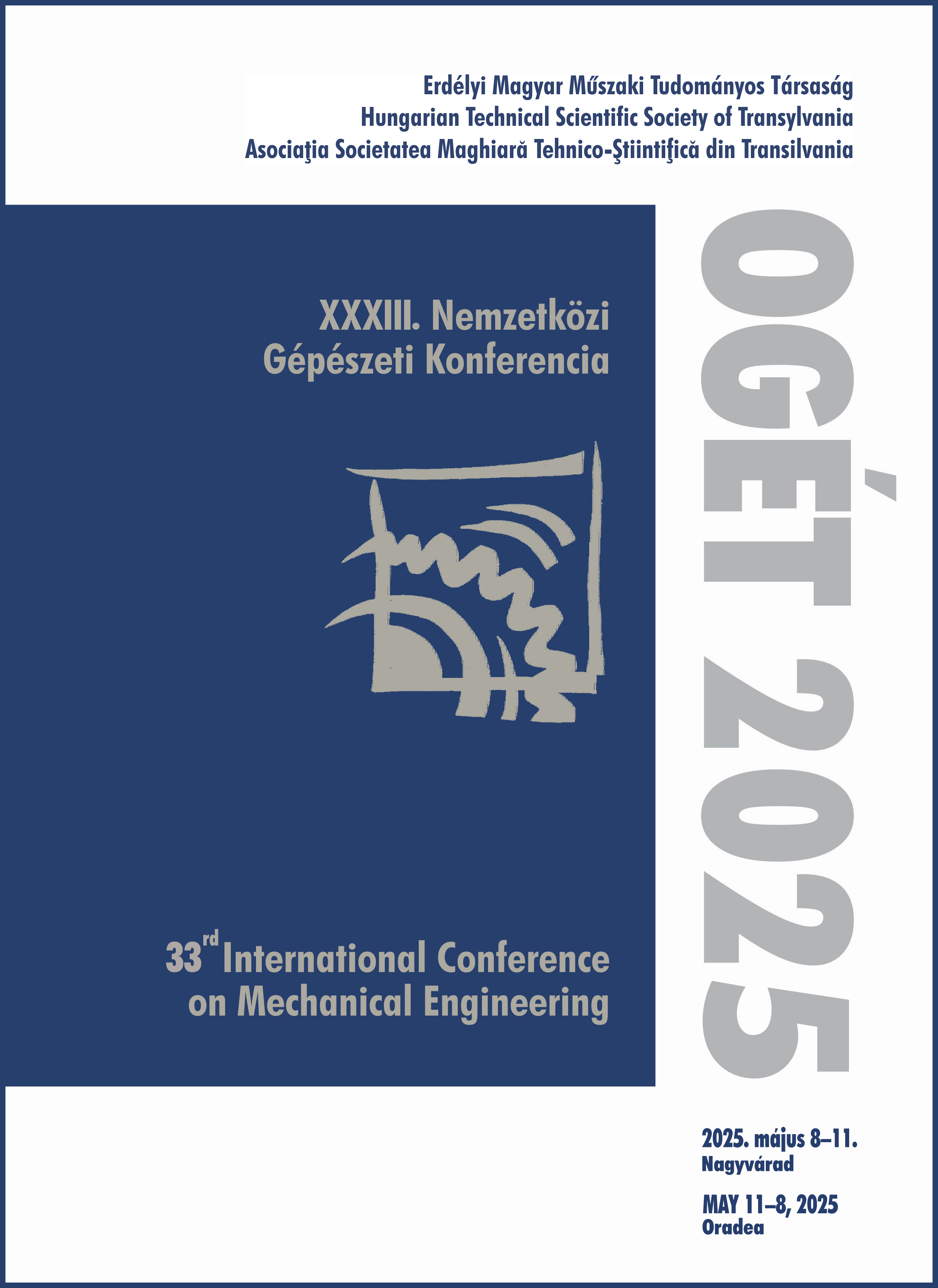Sebészeti célokra alkalmazott 3D nyomtató anyagok mechanikai jellemzőinek vizsgálata és az eredmények alapján open access adatbázis létrehozása
Investigation of the mechanical properties of 3D printing materials for surgical applications and creation of an open access database based on the results
Keywords:
medical 3D printing, additive manufacturing, sterilisation, mechanical tests, 3D printing materials, /, orvosi 3D nyomtatás, sterilizálás, mechanikai vizsgálatok, 3D nyomtató alapanyagokAbstract
The aim of the research presented in this paper was to investigate the mechanical properties (tensile, flexural, and compressive strength) of sterilized and non-sterilized plastics produced using different printing technologies, and to create a freely accessible, expandable online database based on the measured data.
During the investigations, two 3D printing technologies were used: the most common extrusion-based FDM and a resin-based method known as PolyJet. For both technologies, we produced test specimens from five different material types in three different orientations, and determined their tensile, flexural, and compressive properties both before and after hydrogen peroxide plasma sterilization.
Our measurement results confirmed that the direction of layering is a significant factor for FDM technology, but it has no substantial effect on the materials produced by the PolyJet process. Furthermore, we found that the influence of sterilization must be considered in the design of surgical instruments made with 3D printing for certain materials.
Kivonat
A jelen közleményben bemutatott kutatásunk célja a különböző nyomtatási technológiával készült, sterilizált és sterilizálatlan műanyagok mechanikai tulajdonságainak (húzó-, hajlító- és nyomószilárdság) vizsgálata, valamint a mért adatokra alapozva egy szabadon elérhető, bővíthető online adatbázis létrehozása volt.
A vizsgálatok során két 3D nyomtatási technológiát alkalmaztunk: a legelterjedtebb extrúziós, vagy FDM és egy gyanta alapú, ún. Polyjet módszerrel készítettük a mintákat. Mindkét technológiával 5-5 anyagtípussal, három különböző orientációban állítottuk elő a próbatesteket, amelyeknek a húzó-, hajlító- és nyomó tulajdonságait határoztuk meg sterilizálatlan és hidrogén-perixodos plazma sterilizálást követően.
Mérési eredményeink alapján igazoltuk, hogy a rétegződés iránya az FDM technológia esetén lényeges tényező, azonban a Polyjet eljárás anyagaira vonatkozóan nincs érdemi hatása. Megállapítottuk továbbá, hogy 3D nyomtatással készült műtői eszközök tervezése során egyes anyagoknál figyelembe kell venni a sterilizálás befolyásoló hatását.
References
Dong BK, In HL, Hae YC. A Study on Mechanical Properties of Additive Manufactured Polymer Materials. Transactions of the Korean Society of Mechanical Engineers 2015; 39(6):773-80.
Vega V, Clements J, Lam T, Abad A. The Effect of Layer Orientation on the Mechanical Properties and Microstructure of a Polymer. Journal of Materials Engineering and Performance 2011; 20(6):978–88.
Barclift MW, Williams CB. Examining Variability in the Mechanical Properties of Parts Manufactured via Polyjet Direct 3D Printing. 23rd Annual International Solid Freeform Fabrication Symposium - An Additive Manufacturing Conference 2012; 876-90.
Kaiahara FH, Pizi ECG, Straioto FG, Galvani LD, Kuga MC, Arrué TA, Junior AR, Só MVR, Pereira JR, Vidotti H. Influence of Printing Orientation on the Mechanical Properties of Provisional Polymeric Materials Produced by 3D Printing. Polymers. 2025; 17(3):265.
Farzadi A, Solati-Hashjin M, Asadi-Eydivand M, Abu Osman NA. Effect of Layer Thickness and Printing Orientation on Mechanical Properties and Dimensional Accuracy of 3D Printed Porous Samples for Bone Tissue Engineering. PLoS ONE. 2014; 9(9): e108252.
Araújo LV, de Siqueira FSF, de Macedo RFC, Gomes FS, Castro GG, Dibai DB, Maia Filho EM, Tavarez RRJ. Analysis of Mechanical Properties and Printing Orientation Influence of Composite Resin for 3D Printing Compared to Conventional Resin. Materials. 2024; 17(22):5626.
Alharbi N, Osman R, Wismeijer D. Effects of build direction on the mechanical properties of 3D-printed complete coverage interim dental restorations. J Prosthet Dent. 2016;115:760–7.
Unkovskiy A, Bui PH, Schille C, Geis-Gerstorfer J, Huettig F, Spintzyk S. Objects build orientation, positioning, and curing influence dimensional accuracy and flexural properties of stereolithographically printed resin. Dent Mater. 2018; 34:e324–e33.
Vayrynen VO, Tanner J, Vallittu PK. The anisotropicity of the flexural properties of an occlusal device material processed by stereolithography. J Prosthet Dent. 2016;116:811–7.
Manó S. 3Dprint Materials Database. [Internet]. Available from: https://3dprintmaterials.unideb.hu/.


